#Fable 2 aesthetic
Text

Fable II Character Aesthetics - Reaver
#Reaver#Fable Reaver#Fable II#Fable 2#Fable II aesthetic#Fable 2 aesthetic#Fable II edit#Fable 2 edit#Fable aesthetic#Fable edit#Fable games#Fable#mine
117 notes
·
View notes
Text






ᴠɪᴅᴇᴏ ɢᴀᴍᴇs ɪ ʟᴏᴠᴇ
⎆ the wolf among us
#fav video games#the wolf among us#twau#wolf among us#bigby wolf#twau bigby#twau 2#sheriff bigby#the wolf among us bigby#telltale games#telltale wolf among us#telltale the wolf among us#snow white#twau snow white#twau snow#fables#fables comics#skybound#skybound entertainment#telltale#big bad wolf#neon colours#night life aesthetic#night life vibes#neon nights#neon aesthetic#wolf among us aesthetic#wolf among us vibes#games i like#games i love
67 notes
·
View notes
Text
You know, I decided that my Fable Moodboards actually slapped so this is the masterpost of the current ones.
In order: Theresa // Sir Walter // Elliot // Jasper // Saker // Abbot // Spire // Logan's Soldiers // Sam and Max Spade
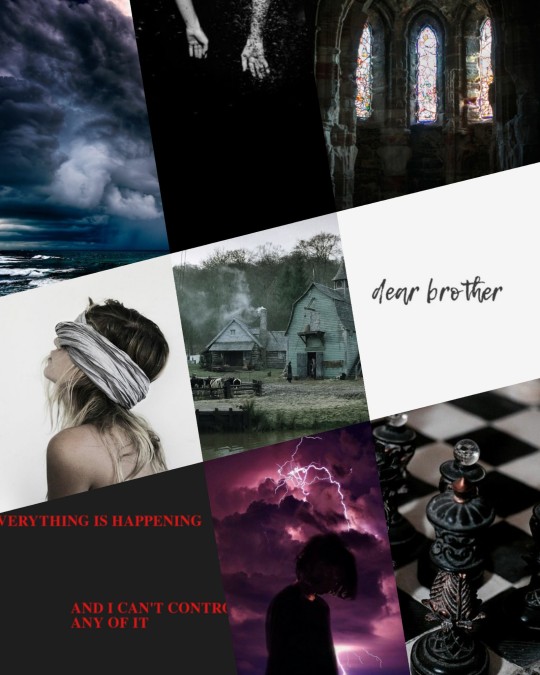



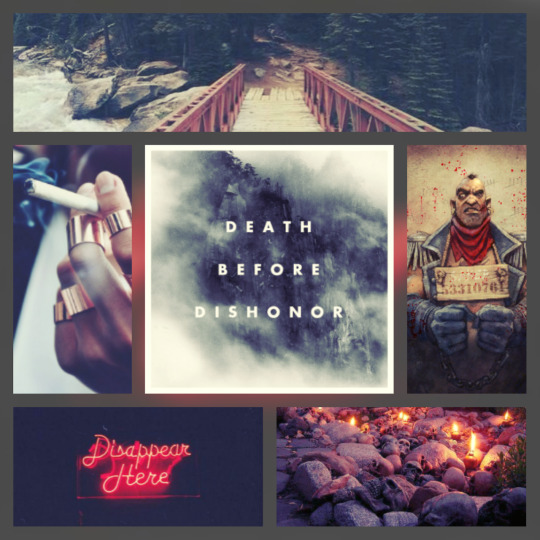




16 notes
·
View notes
Text




Orphaned Sparrow to Hero Queen Lionheart
Had the idea to try and use aesthetic boards to tell the story of my Sparrow (renamed Lionheart after the Spire) as a fun little exercise and I'm in a Fable mood so!! I feel like it hits all the major story beats which I'm super pleased by
#fable#fable 2#sparrow#fable ii#fable sparrow#oc aesthetic#I know I wouldn't be able to write it so#using images to help get the ~vibes~ across is good enough#I love fable so much
8 notes
·
View notes
Text

last design tweak i swear
#arttag#fable#fable 2#hero of bower lake#hero of bowerstone#the effects of mollymauk and howl on me... are destructive#i am so consumed by their aesthetics
69 notes
·
View notes
Text
eah thing but make it FASHION aka met gala themed but I'm sunburnt and only half awake right now #30 (PART I)
SURPRISE! I'm alive and well. Mostly. I'm getting ready to leave for university so I am tireeeeed. Anyways. I know there was a lot of controversy around the met gala and that I'm extremely late in doing this, but I do want to make this post to still add some ever after high fun and to also have some fashion fun with the help of Pinterest. The theme is (with great consideration of your suggestions and of my own deliberation) "Hans Christian Dior: A Spellelebration of Fable-ous Fashion"
This mainly came from research on past met gala themed and how quite a few of them are themes after specific fashion houses or designers AND from the Thronecoming special (which is PEAK fashion in the series besides Way Too Wonderland and Spring Unsprung) where Cedar calls out Duchess for wearing a fake Hans Christian Dior dress! (note, I am trying to mainly use Christian Dior gowns/outfits for this because of the reference in Thronecoming also sorry for the blurriness)
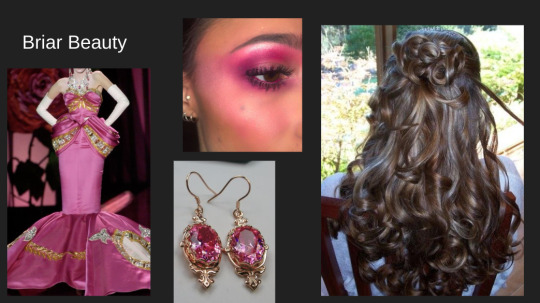
Briar is THAT GIRL. She is flushed in hot pink looking gorgeous with about every inch of her glittering with body shimmer, glitter hairspray, and shiny shiny jewels. I like to think that instead of the gold detailing in the pictures it would be silver and that the closer embellishments would be rose detailing to honor her usual aesthetic and legacy

Faybelle is serving every bit of whimsy and darkness. Her accessories and the layers of her dress and even her hair seem to be alive with lightning crackling around. Her wings are extra pretty and equally terrifying with silver thorn adornments that are magically light enough to not weigh her down

Ashlynn's look was partially inspired by Lady Tremaine's silhouettes in the lie action Cinderella while still maintaining the color palette of her usual outfits. Her look combines the beauty of the enchanted forest and foliage and the classy, fine china patterns you'd see in a royal palace. She is absolutely radiant and of course while walking up the steps of the Met, she loses a slipper ;)
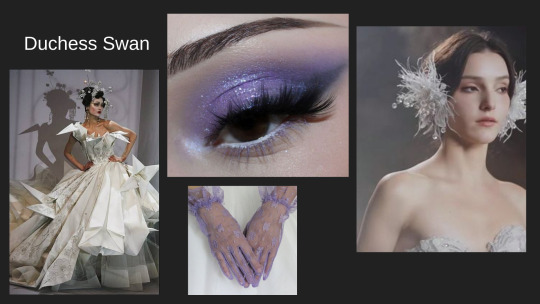
Duchess has taken a slightly different approach to her usual fluffy-tulle outfits and gone for more of a paper swan look. The sharp angles provide a dangerous look to her, contrasting the soft purple accents and the feather headpieces she wears. She seems to float on air and she walks through the crowds of people in her gown, a true picture of elegance and grace with a touch of darkness to her
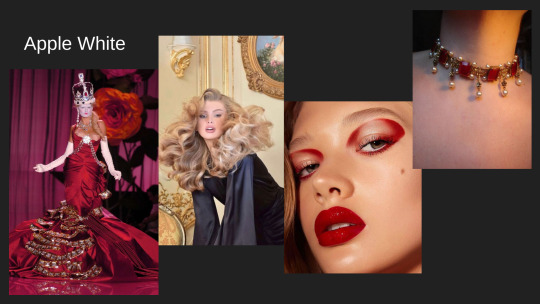
The one and only Apple White is DRAMATIC. HUGE HAIR. BOLD RED MAKEUP. EXTREME DRESS SILHOUETTE. THE MOST ROYAL JEWELRY YOU CAN FIND. She looks like something out of an editorial magazine on royalty. This entire look is a more elevated look of her daily wear, and she wears it with grace and sophistication

Darling looks so DARLING! I do think the gold on the dress would be swapped out for silver and that the pearls would be more pink-y toned so it would match the jewels in your basic outfit (same with other accessories). She's sticking with the sort of rococo hair that she usually has because it's iconic let's be honest. I was debating on giving her a more armored look but for this I wanted to embrace her softer and delicate look
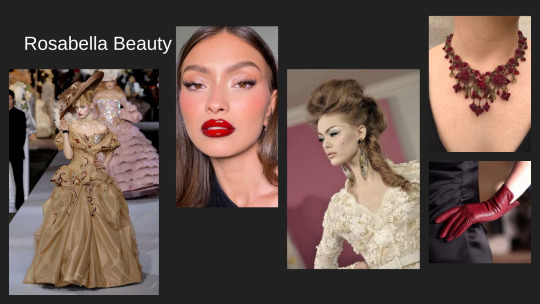
Rosabella looks like a French aristocrat from an old Hollywood movie in my mind for an event like this. Nevertheless any fur details are faux, after all our girl is still an animal activist (slay queen). I think the dusty gold-brown tone of the dress with the deep red accents and jewelry pays a nice homage to not only her day to day look but to Belle's iconic yellow dress. I also feel like her and Briar would contrast well because Briar is very bright and vibrant in her look and Rosabella is more muted and understated which I like a lot
anways I'll make a part 2 eventually, I have all the collages made I just need to create a post and write descriptions. But for now I'm gonna go back to packing and planning for uni and I'll get back to y'all when I can (and hopefully my fanfictions, who now haunt me in my dreams)
#eah#ever after high#briar beauty#faybelle thorn#Duchess swan#Apple white#Rosabella beauty#Darling charming#Ashlynn ella
82 notes
·
View notes
Text
You know what, I like you, let me share my headcannons/thoughts on an AU I recently mentioned...
Fable smp Coffee Shop AU...
• Sherb runs a 24/hr (or late opened) Cafe, The Alchemist Brew. They specialise is mixing different coffee flavours to create a new taste and can even create one for a persons specific need or even mood.
The people that have often come in say it was exactly what they needed; students coming in to study found they work best with Icarus' creations - jokes that they put a focusing chemical drug in it. People on first dates say they added an ingredient that was a big ice breaker for them to bond over. A few cases come in home sick and the drinks taste like home somehow.
• Rae runs another cafe in a different part of town. It's a more traditional place, more old fashioned, rustic aesthetic.
Rae got to take over this place a lot sooner than he thought.
His mother went missing when he was young and his step-dad, Fable, left a few years ago. Icarus' was supposed to take over the buisness but they wanted to do their own thing, especially since Rae and Icarus had different ideas on how they should run the place.
So Rae runs the Gilded Cafe. While keeping the more traditional things on the menu, Rae also explores the history with Coffee. Makes ones how they would make it 30, 50, 100 years ago and happily, shares it with their customers.
• Athena is learning how to open their own bakery (Flour Garden) with Jamie. They offer their goods as a trial to both Gilded and Alchemist Brew Cafe. This way they get to try new foods and have people taste test them and both Cafes get a unique item on their menus each week. The feedback from customers is always appreciated and it sparks new ideas for foods and types of foods.
• Momboo runs a flower and tea shop, The Pink Tulip, both as a seperate transaction but has a talent for getting sweet tastes out of nature's prettiest petals
• Which is a dramatic comparison to her sister, Ocie/Kai, who runs a bar, Sea Dragon, iconicly known for its underwater sailor/pirate aesthetic and strong drinks to match
• Wolf is a business analyst and has helped with the businesses as well as a few others around town
• His partner, Centross, helps manage the Sea Dragon. A couple years ago, he tried to start a buisness with Icarus and Easton (who is a real estate agent), but it crashed and burned real quick. Wolf talked to Kai and she was generous enough to help Centross get back on his feet and they ended up working really well together.
• Aax works in the Gilded Cafe with Rae. He came to Rae looking for work - one in a new town with no connection to the Telchin company. They were awful, treated their employees terribly, and they would use special artificial chemicals in their drinks to make it taste like flavours (Hazlenut, vanilla etc), never the real thing, even their machines were designed to cut corners with brewing.
• Ulysses is still with Telchin, casual, but is still in the town with his Partner. He used to be able to do beautiful coffee powder art, but since the accident in the shop he can't even hold a cup steady.
• Will runs little a Cafe - The Traveller - based on flavours around the world, some places he's been lucky to actually travel to. Seven helps him run the place and really good with machines so they never have to worry about things breaking.
• Now all these businesses have their challenges, but Icarus feels they have an extra one...
A night club across the street 2 doors down, "The World Port". It's an exclusive place and Icarus had heard a few things about it.
It's a jack of all trades types of place, has accommodation for any events, Bachelor party's, birthdays, buisness meetings, heck even wakes.
Icarus' problem is that - for some reason - the owner recommendeds The Alchemist Brew to their customers as a place to sober up. Which would be fine if that didn't mean nights of drunks coming in, making a mess and passing out. They somehow get their mail mixed up as well, and The World Port is loud and makes it hard to focus on work.
• The World Ports concept is to be a place for everyone. It's main area is a bar with a dance floor and great music. They have sectioned off rooms, identified by colour, each room can accommodate for certain events. You could hold 3 different events in once.
• Smaller Headcannons/Notes:
• Caspian comes into the Gilded Cafe as a place to write his stories. He started going there for the nice coffee and cozy vibes, but the manager seems really nice and passionate about his work, so he kept coming in and is now a regular. And the Barista working there is cute nice to talk to as well
• Rae grew to appreciate the small talks with Capsian while on shift. He's even made it into a few pages of Raes sketch book - that will never see the light of day - but that has nothing to do with anything! Rae always draws random customers for practice! Despite Aax pointing out that he draws Caspian more.
• Aax and Rae are dating and are peeking interest in Caspian.
• Wolf and Centross are dating, though Centross is showing interest in Kai. He would deny it to hell and back even though everyone can see it.
• Icarus gets new ingredients/inspiration from their friends. Athena and Jamie's creations, Momboos flowers etc
• During the business Icarus, Centross and Easton tried to run, Icarus made a purple drink that turned out to have an addicting side effect. Part of the reason thee business failed.
• Since the World Port is exclusive, Icarus can't get in to talk to the owner. However, there have been times when they've come into the Alchemist Brew, and Icarus has just not been in there at the right time to see them.
• If they don't want to deal with maintenance companies, the other owners ask Seven to come over and fix their equipment, especially if it should be a simple fix.
• Galahad works at The Traveller and suggested their own mix of a spicier blend
Feel free to add onto or suggest things!
#i kinda wanna cosplay from this-#partially cause i cant draw#itd be cool#fable smp#fable smp headcanon#fablesmpblr#fsmp#fable smp au#fable smp coffe shop au#coffee shop au
86 notes
·
View notes
Text
I personally think that the aesthetic of fable 2 and 3 were the best in the franchise. I love steampunk like games
16 notes
·
View notes
Photo

I NEVER PLAYED BUG FABLES I JUST WANT TO DO MY TAKE ON AN AESTHETIC OVERHAUL AND CHARACTER DESIGNS
hey kid... we’re going to save Bug Fables 2!!!
its about an ant

+misc characters and original game redesigns


175 notes
·
View notes
Text
Jenny's June Movies
Portrait of Jason (1967)
Furiosa (2024)
Beijing Watermelon (1989)
Jubilee (1978)
The Player (1989)
Oliver Twist (1948)
Ugetsu (1953)
Mank (2020)
Living (2022)
The Wonder (2022)
Summertime (1955)
Don't Look Now (1973)
The Elephant Man (1980)
Klute (1971)
The Man Who Laughs (1928)
Portrait of Jason: (***) Fascinating documentary that is just a talking head interview. Film making doesn't get any simpler than this, but Jason Holliday is such an interesting subject that it doesn't matter. Director Shirley Clarke brings us along for the wild ride of a long conversation with this gay, black hustler and cabaret performer living in the Chelsea Hotel in the 1960s.
Furiosa: A Mad Max Saga (***) My favorite so far in the Mad Max saga, the story is rooted in a terrific performance from a child actor (Ayla Brown) melded digitally with Anna Taylor Joy's portrait of the young Furiosa and her rise to the exalted position of Praetorian in the brutal world of the citadel. Containing Easter eggs from all four of the previous outings as well as a confirmation of the mutability of the Mad Max Universe (narration at the end describes the story as a legend whose telling may change depending on the teller), the biggest joy was the quiet, heartbreaking romance between Furiosa and Praetorian Jack (Tom Burke).
Beijing Watermelon (***): After watching Nobohiko Obayashi's House, earlier this year, I was expecting something far crazier than this relatively quiet portrait of a man consumed by helping a group of Chinese students by feeding them from his market stall, to the detriment of his own family and eventually his own health. A memorable fable about the way in which simple acts of care can transform a community, as well as the ways in which ego can play a part in generosity. The movie only gets as experimental and strange as the director's previous work, toward then end, when filming the ending set in China was impossible due to massacre of student protestors in Tianamen Square. Obayashi turns the story into a meditation of film making with a fourth-wall breaking technique to address the difficulties with the viewer. The movie leaves you feeling an ache of sadness especially when you remember the actual history behind it.
Jubilee (**) Derek Jarman directs this violent, bleak look at dystopian Jubilee Britain, featuring a host of punk icons from Adam Ant to Siouxsie Sioux and the Slits. There is also some nonsense about Queen Elizabeth I time traveling into the film. Honestly the most interesting part of the film for me were the glorious aesthetics, with clothes and make-up by Viivan Westwood, who later disowned her work in the film. Adam Ant is the biggest surprise in the movie, he is always charming and watchable, a stand out among the rest of the cast.
The Player (***) Not my first time through this movie, but another viewing solidified it as the top of the pile for 90s Altman. A wonderfully meta film about film making that is so loaded with jokes about film history and industry insider details that it impossible to catch them all on the first viewing. All of this in a tidy film noir package, led by Tim Robbins who plays a souless film executive being pursued by a disgruntled screenwriter.
Oliver Twist (***1/2) Stands out as the best and most memorable new to me film of the month, with a painful caveat. One of the major milestones in director David Leans estimable career, Oliver Twist is marred by his insistence on keeping the character Fagan as he is depicted in the novel, a hateful Jewish stereotype.. The visual look of this film, with its grimy, slicked cobble streets and rooftops of London nightmare fantasy set, would go on to inspire so many movies, but most notably, Carol Reed's The Third Man which came out the following year. Robert Newton is a standout as a terrifying and nuanced Bill Sykes and John Howard Davies ably carries the film as Oliver. Lean beefed up Oliver's role in the last third of the novel, setting up a chilling and dramatic conclusion to the action.
Ugetsu: (***) Another immediate post war film, that is set is Japan of the past in the time of warlords. A pair of couple navigate the coming of war in different ways, leading to devastating unforeseen consequences. A haunting--quite literally--film about war and the inability to ever fully return from it.
Mank (***) This was my second time through David Fincher's dreamy movie, inspired by real life story of writer Herman Mankiewitz, screenwriter of Orson Welles' Citizen Kane, told in a style that closely mimics that classic. While all of it is pretty to look at, and the ensemble cast is up to the task of creating William Randolph Hearst's inner circle, attempts to make real life into too much of a movie, make the whole thing creak at the hinges a bit. Tom Burke stands out as Welles, Amanda Seifreid who I'd previously only seen in Mamma Mia, gives a lovely performance as Marion Davies, Hearsts mistress, while Gary Oldman is transformed through make-up and accent work into Mank. I wish I wasn't so aware of the stage craft, but that too is like the original I suppose and there is enough insider stuff in this movie to make a film nerd like me happy through any number of screenings.
Living (**1/2) a remake of an Akira Kirosawa film, about a dying bureaucrat who does his best to make an impact before he dies, features Bill Nighy in the lead role. Nighy creates a subtle portrait of a man who is practically fossilized in his desk at work, slowly coming to life as he takes on the project of getting a playground built in the post-Blitz London.
The Wonder (**1/2) One can be forgiven for confusing this movie with Lady MacBeth, which also stars Florence Pugh as a young woman in rural Britain, getting involved in a deadly web of intrigue. Like that film, The Wonder features a lot of scenes of Pugh in Victorian dress walking in the windblown landscape, and staring into the camera while she is seated quietly in a room. The setting here is rural Ireland twenty years after the Great Hunger. Pugh plays a nurse who is sent from England to watch a young girl who has supposedly survived months without eating. Hired by the village to either prove or disprove the so called Wonder of the title, the film slowly builds into almost unbearable tension in the final acts. Lovely performance from the whole cast, including, once again, TOM BURKE. (Are you seeing a theme in June Movies????)
Summertime (****): Classic David Lean, classic romance. Is it gay? Well yeah, I think Hepburn's character is a lesbian who has finally met the one dude who does it for her and he fancies her too and it foments a complete crisis of identity. Also it's an ode to women traveling alone and living their best life and having fun and doing walks of shame for the first time and oh I just love seeing this middle aged woman get to be 20 something!. Rosanno Brazzi is so cute and this is the movie that made me fall for him.
Don't Look Now (***): So I watched this and Summertime back to back and wow you could not get two more different views of Venice While Lean's film is more of a straight forward travelogue it's not excessively gritty or excessively pretty. It's balanced and though it is a tourists view it still takes on stuff like throwing garbage in the canal or getting lost. All of those things are present in Don't Look Now but they take on a darker edge. This is a city designed to hypnotize seduce and confuse you and you'd better be careful or lose your life. Features a great twist and absolutely top tier 70s psychological horror with lots of creepy vibes.
The Elephant Man (***): I had not seen this since it was in the theaters and I was so blown away by it. It's every inch a David Lynch film...it's like Eraser head with a big budget in many ways. I seriously can't believe someone watched Eraserhead and said: yeah lets give this guy millions to make our studio film. Even more amazing that the final product is so fucking successful as both a studio film and a distinct piece of Lynchian art. Johnny Gielgud and Wendy HIllier are both in this and both fabulous and Anne Coates is the editor. It's like an ode to British Noir films like Gaslight and The Lodger and especially Oliver Twist--and even a little Pygmalion callback in one scene that HIllier is in. John Hurt plays John Merrick and is heartbreakingly human when those around him can only see a monster. Lynch makes the choice to reveal his face about 45 minutes in and it's so impactful. The makeup is incredible, but also he lets the character exist for a long time so he isn't just the makeup. Anthony Hopkins is amazing playing the Victorian doctor who "rescues" Merrik and ends up exploiting him as well. The real horror of this film is in the realization of his own culpability/responsibility that gets shifted onto the audience.
Klute (***): Part of my Donald Sutherland memorial minifest, this movie really belongs to his female costar. Jane Fonda plays Bree Daniels, a Manhattan sex worker who is being stalked by a former client. There is nothing in The Conversation that isn't done first and frankly better in Klute, using modern technology and paranoia about it to maximum effect. Sutherland plays the titular cop, Klute who has assigned himself to the cause of protecting Daniels. An interesting love story develops between the hardened and wary Daniels and the hardened and wary cop.
The Man Who laughs (***): I got to see this for the first time on the big screen with a new original score performed live, which is the best way to see silent films. Veidt is incredible acting through and over and around this makeup, expressing so much with his eyes. Like The Elephant Man, this is a movie about the way society perceives difference as monstrous. A beautiful love story and a revolutionary social justice vibe tie the room together.
#Jenny's June Movies#OK well I beat my goal of finishing before the end of July!#June was a fantastic month for film watching my summer has kind of sucked in many ways#but at least I'm getting my money's worth out of criterion channel
19 notes
·
View notes
Text
I made myself a Fire Emblem theme for my solitaire game
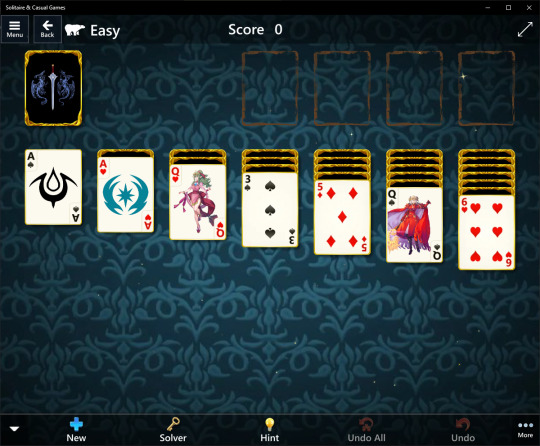


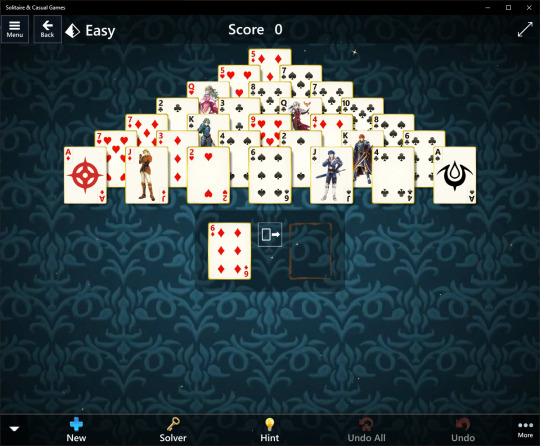
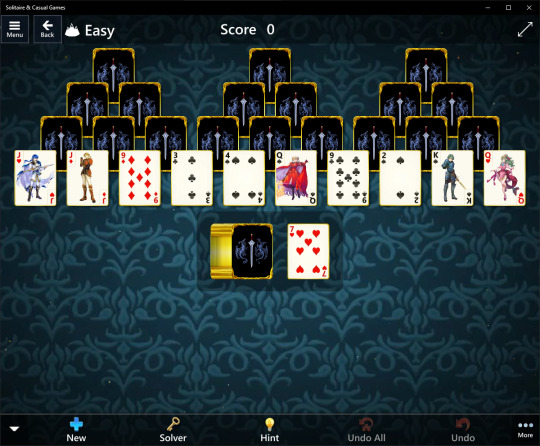
Deets under the cut
Base theme: Fable
Deck: Solitaire Celebrates
Effect: Stars
PLAYING BACKGROUND:

CARD BACKING:

ACES:
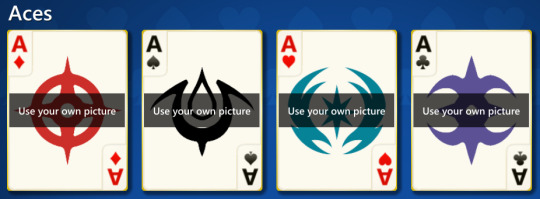
Ace of Diamonds: Hoshido/Birthright
Ace of Spades: Mark of Naga/Brand of the Exalt
Ace of Hearts: Valla/Revelation
Ace of Clubs: Nohr/Conquest
KINGS:
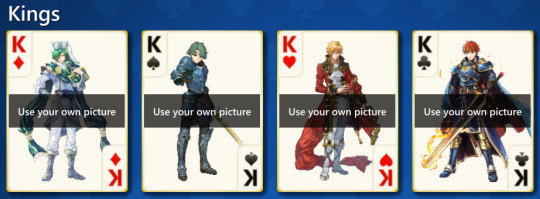
King of Diamonds: Lewyn
King of Spades: Alm
King of Hearts: Eltshan
King of Clubs: Eliwood
QUEENS:
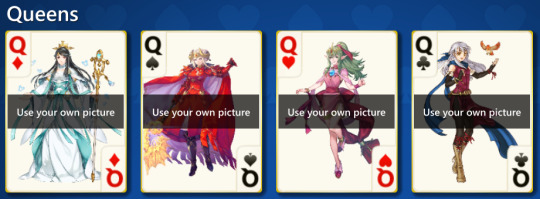
Queen of Diamonds: Mikoto
Queen of Spades: Edelgard
Queen of Hearts: Tiki
Queen of Clubs: Michaiah
JACKS:

Jack of Diamonds: Forde
Jack of Spades: Inigo
Jack of Hearts: Seliph
Jack of Clubs: Leo
IMAGE SOURCES:
Background: Here
Card backing: Here
Aces: The French Wikipages for Awakening and Fates
Face cards: Heroes and official art [Inigo specifically here]
FUN FACTS NOBODY ASKED FOR:
The face cards did not align this way naturally. All of them had to be zoomed in at least twice, most four, and a few had to be scooted over a little to avoid being cropped in the wrong places or to fix general alignment issues
The game doesn't properly support transparent images, so I had to give each face card a background; really all I did was colour drop the deck's base colour and use that as the background so it would match
Each face card was shrunk to the card's base dimensions [422x562] with the background being twice that size [844x1124] to allow for easier placement without running into a black background because of said transparency issues
I didn't make any changes to the playing background. I just set it and left it as is
The card backing isn't quite aligned in the center, but I have no motivation to try and fix that right now
The backing border was completely unintentional. I chose that deck to build off of simply because of the gold rim around the face-up cards. I didn't realise it would come with a backing border, but hey it works
I chose Fable as the base theme to build off of for two reasons: 1. Aesthetic™, and 2. The background music is the closest to Fire Emblem music the game has [I really wish you could choose your own in-game ambience instead of having to use a preset theme first]
The stars effect has no real impact on the theme, I just like it
I initially wanted Ferdinand to be the Jack of Diamonds, but I didn't want to use his pre-skip design, which is all Heroes had, so Forde was chosen instead
Takumi was briefly considered for Jack of Diamonds and King of Clubs before those roles went to Forde and Eliwood
Ishtar was going to be the Queen of Clubs, but I decided three Genealogy characters was enough, so Michaiah took this spot
Other candidates for Queen of Clubs were Cherche, Celica, Seiros, and Eirika
I went with the Chrom!Inigo edit instead of normal Inigo or Lazward simply because Chrom!Inigo is best Inigo and you cannot change my mind
Alm, Michaiah, and Forde are the only ones who use official art instead of Heroes art. I preferred Alm and Michaiah's official art while Forde isn't even in the game yet [get on that, IS]
I originally wanted to use Edelgard's official post-skip art as I didn't [and still don't] like how her Heroes art sharply cuts off, but it ultimately clashed badly when trying to align it, so I had to use her Legendary alt [her pre-skip and Three Hopes designs were out of the question from the get-go]. I aligned the cutoff with the edge of the card as best I could and I'm surprised it worked
The only set in stone characters from the very beginning were Eltshan, Seliph, and Inigo. The rest I decided as I went on
Tiki was completely spur of the moment. As soon as I remembered she existed, I was like "Oh yeah, adult Tiki would be a perfect Queen of Hearts". I saw her Brave alt and didn't look back
I briefly considered using Eltshan's performance alt, but decided against it
While I knew I wanted Seliph as the Jack of Hearts, I initially wasn't sure which version to use, but I ultimately went with the version I liked the most, which was his Brave alt
Lewyn was a toss-up as to which version I wanted to use, but I went with his festival alt as I liked it more than his normal version
Other characters I considered but with no solid placement were Sigurd, Arvis, Lucina, Ayra, Soleil, Dorothea, Olivia, Deirdre, Say'ri, Elincia, Ryouma, Innes, Tana, Ephraim, Felix, and Constance
Inigo and the aces required some additional editing to remove their white backgrounds before setting up the off-white backgrounds they were supposed to have for this set. I worked on Inigo's for so long trying to edit out lossy pixels around the edges of his art that the editor crashed on me. Hurray for autorecovery
#fire emblem#microsoft solitaire#i'm seriously in love with this i've looked at this for five hours now#though technically i made this theme a few days ago but who cares
21 notes
·
View notes
Text

Fable II Location Aesthetics - Gemstone Grotto
#not my best work but I love that cave#Fable II#Fable 2#Fable#Fable games#Fable II Aesthetic#Fable 2 Aesthetic#Fable Aesthetic#mine
38 notes
·
View notes
Text
Something I think doesn't get discussed often on the subject of Fable is the Knothole Island DLC. I feel that that DLC is so well designed on a variety of levels, and it seems like a lot of people worked very hard to create something special.
The overworld of Knothole island is SO interesting and unique, featuring a weather system that completely changes the landscape of the island at various points, making exploring the island itself extraordinarily fun and rewarding when you finally figure out how to reach an item that wasn't previously accessible. The changing weather is also refreshing since it's not seen elsewhere in the game (maybe with a few exceptions? I'm thinking about westcliff after Barnum's restoration, but I could be wrong and it could just be raining the whole time - lmk if there's any other instances of weather in a (fable 2) biome changing that I'm forgetting?)
The dungeons are also particularly fun, and feel like they give you a nice break from the feel of ordinary Fable 2 content. Often when I'm in the mood to go back and play this game, one of the things that first comes to mind is the Storm Shrine... not for any particular reason, I just think it's a really well structured experience. They do a great job of keeping the overall feel of the game and not making the new areas feel too jarring in terms of art style or overall aesthetic... often times DLC content is very recognizable as add-on content because it doesn't fit with the core game (Shivering Isles comes to mind). The designs of these dungeons feel unique, and make use of core fable 2 mechanics in ways that make them feel refreshing and interesting.
(The story is spread out over 3 installments that become accessible at various points in the Fable 2 timeline, meaning you don't get too burnt out on DLC content and can return to regular game content after completing 1/3 of the DLC. also great design.)
I wish I could speak more on the actual level design of Knothole Island (both dungeons and overworld) but I just don't have enough knowledge of the mechanics of that to speak about it... (feel free to add on if you know something about this aspect of game design, lol)
It also adds a ton of fun items, including some easter eggs, but especially cosmetic items which are not strictly necessary for enjoying the game. They're entirely an enhancement to the experience of the game so players who don't have the DLC aren't missing out. Not to mention the Box of Secrets, an entirely new type of item trade mechanic. (a really stupid niche thing I love is when a DLC gives your character a pair of stupid sunglasses to wear. the Solar Shielding Spectacles and Professor's Spectacles in the Witcher 3 my beloved)
Overall I just feel like it's a really good example of a quality DLC. It doesn't add an insanely large area or huge, time-sink amounts of gameplay, but it iterates on the base Fable 2 design and mechanics and makes something that's a very fun, worthwhile addition to the game. There's also enough depth to the content that is there so that it rewards you for spending more time on it, depending on your preference for how thoroughly you want to explore or be a completionist.
(Traitor's Keep in Fable 3 is also good but I personally didn't find it as memorable... it had a more ambitious plot, though. love the Milton reference.)
#fable 2#fable II#fable#will any potential Fable reboot dlc be absolutely too massive and very likely exhausting? yes#nonetheless. in memory of knothole island#knothole island
11 notes
·
View notes
Text
Over the Garden Wall Fable AU Concepts
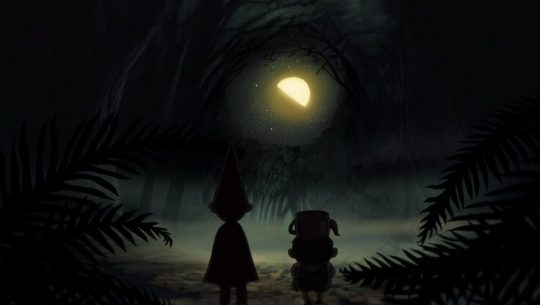
Okay, so - when I was across the pond to see my partner, them and I watched Over the Garden Wall. @the-uninformed-zennial had never seen it, and it's so very much their vibe so obviously we had to. And, as we are both Fable nerds, we ended up talking about potential AU ideas. I'd had two possible concepts for AUs floating in my noggin for a while and we fleshed them out together a bit.
Now, between (hopefully) finishing Three Wishes, and the holidays, and that pesky 30+ page bachelor thesis paper, I won't have time to write them as actual fics anytime soon, so I figured I'd at least put out the concepts somewhere, and Tumblr seemed like a good choice.
For anyone unfamilar with Over the Garden Wall: It's a mini series by Patrick McHale that aired on CartoonNetwork a while ago, focussing on two brothers stuck in the mysterious Unknown trying to get home and experiencing wacky halloween-y hijinks on the way. The Unknown is often interpreted to be a sort of afterlife/limbo, and the series has a lot of themes of that direction, but it's still quite charming and cute and funny (as it is made for kids).
_____________________________________________________________
Concept 1
Icarus and Rae are in the place of Greg and Wirt – they got into some sort of fight in the real world and ended up in a situation that made them enter the Unknown as a limbo between living and dying. In this case, the characters from the Unknown would be remaining a lot more like the ones we know from the show, so the Woodsman is just The Woodsman, the Beast is just The Beast, and so on. I’m not sure who’d be in the place of Beatrice, but there are a few possibilities. If we’re going with the popular interpretation that the Unknown is a form of the afterlife, then it could be someone from canon who has passed already (if we wanna be angsty, it could be Haley maybe? I am not sure if I want her to be though), or alternatively Beatrice could just be a random soul who, like in OtGW Canon, is trying to free their own family.
In this AU, the story would probably progress similar to the one in OtGW – Icarus and Rae trying to get home and through the Unknown, getting into more fights along the way, until Icarus ends up losing faith in being able to get home completely. Rae – much like Greg – would offer himself to the Beast in order to get Icarus home, and Icarus in turn would have to step up and be a responsible older brother and save Rae from turning into an Edelwood.
There’s a lot of similarities between Icarus and Wirt, I feel like, though Wirt’s anxious poetic nature seems more alike Rae. But both Icarus and Wirt have this streak of blaming their younger brothers for stuff that those brothers weren’t necessarily responsible for, and lashing out at them, so I can see Icarus in Wirt’s place rather well. Plus, well, Rae, like Greg, going on a whole arc of “maybe this is actually my fault so I’m gonna go with the Beast to try and fix it” seems fitting for him to me.
Concept 2
Now, the other concept I might actually like more by just a little bit – in this, the people lost in the Unknown would likely be Athena and Jamie, who (due to something other in the real world) are finding themselves in the woods, where they meet the Woodsman – who would be Rae. I can just see Rae being someone to devote themselves to being the Lantern Bearer for the Beast, if it meant to keep the soul of a loved one alive (though in this case it wouldn’t be the child, but likely Aax and Caspian) – plus, the Beast has the whole antler aesthetic going on, so that can overlap neatly with the warden in my opinion. Maybe it’s just cause the Woodsman is such a tragic figure already in OtGW canon, but I think it would be a neat spin to see that character lead the ones lost in the Unknown instead of just sending them on their way, to make the idea that he might be the Beast even worse of a betrayal, which I always thought OtGW was a bit light on. I wish they’d have given that betrayal as much weight as Beatrice’s betrayal. And then, once revealed to the Woodsman that the Lantern holds the Beast’s soul, not anyone else’s, the big fight feels in character for Rae to me, too. Rae’s devotion to the ones he loves is immense, and him fighting the monster that deceived him so – especially to also keep two innocent souls safe in the process – would not only be in character, but also give a quite triumphant turn for him in this AU. Plus, he’d get the happy ending he deserves once he actually slays the Beast and returns home to see that his loved ones are actually there and likely have been all along.
The unfortunate side to his AU idea is that most of the characters in the Unknown, like Rae, already being dead and likely for a long time. However, Zenni presented an alternative idea, where the inhabitants of the Unknown aren’t always actually the souls of the deceased, but might also be sort of mirror-verse representations of them. I’m not sure how Athena and Jamie would get to the Unknown then, but it would be an interesting concept to explore, and give more detail to the world – plus, give Athena and Jamie both more of a reason to trust the Woodsman and either for the believed betrayal to hit even worse or for them to not believe it because they know Rae so well in the real world.
_____________________________________________________________
Now, obviously, these are just concepts, not nearly as fleshed out as I would make an actual fanfic - and some stuff might be jumbled as I've not actually written it out before and the whole Putting Things In Your Writing Brain Into Actual Writing thing is difficult as fuck.
Anyways. Those are the two ideas I came up with and have been mulling around my noggin. I don't know if I'll write them, gonna be honest, but - they are concepts alright.
28 notes
·
View notes
Text
The myth of Medea (2)
Next article, following a chronological order, is “Medea, from the 16th to the 18th centuries”, written by Patrick Werly.

During the Middle-Ages, Medea is depicted in several tales. Benoît de Sainte-Maure’s Roman de Troie, in the middle of the 12th century; Guillaume de Loris and Jean de Meng’s Roman de la Rose, in the 13th century; the anonymous Moralized Ovid of the 14th century ; the Jugement du Roy de Navarre by Guillaume de Machaut in the 14th century, etc…
Between the 16th and 18th centuries, Medea was mostly encountered on theater stages and within operas, in works that are more inspired by the tragedies of Seneca and Euripides, rather than by the Metamorphoses of Ovid. However, there was an effort of appropriation to be made: indeed, the myth of Medea the Scythian, of Medea the Barbarian, part of the classical works of Antiquity, was at risk of ruining the moral values and the aesthetic system that Europe had imposed upon itself. As such, a “displacement” of the figure was required. Three main authors have to be considered: Calderon de la Barca, Pierre Corneille, and Thomas Corneille as the librettist of Marc Antoine Charpentier.

I/ The allegorical reading
The authors of the 17th century mostly found their sources in a mythology manual that had been published in 1552 by Noël Conti (or Noël le Comte, in Latin Natalis Comes, 1520-1582), and which was titled: “Mythology, or the explanation of fables, containing the genealogies of the gods, the ceremonies of their sacrifices, their deeds, their adventures, their loves, and almost all of the principles of the natural and moral philosophy”. Corneille used it to write his Conquête de la Toison d’Or, Caderon also probably used it for his El divino Jason. The seventh chapter of the sixth book is dedicated to Medea: after retelling the myth, Noël Conti presents the “physical mythology”, then the “moral mythology”. In both cases, the process it to try to use the myth for the moral edification of the reader, through mean of the allegory. As such, the reason behind the “dissection and death of Medea’s brothers and children” is because she wanted to put behind her appetite and concupiscence: “if someone let themselves we trapped by the slimy nets of unreasonable pleasures of the flesh, of greed, of cruelty; then it is to no surprise that good advice and counsel climbs on its chariot and flies away in the sky with winged dragon”. According to the etymology offered by Noël Conti, and that Calderon will reuse, Medea is “the advice”, “the counsel”, that is to say, the scholastic tradition, the wise decision, the choice made after a deliberation. The mythographer is aware of the negative image of Medea: but it does not matter if she is good or evil for, in the tradition of the Moralized Ovid, Medea needs to have a usefulness for the moral and religious domains. “Whether we take Medea to be advice and prudence, or to be a very wicked and malevolent woman, the Ancients, through this Fable, intended to shape us and lead us to probity, and to the integrity of the mores”. This is the moral lesson we must keep: the violence of the myth is transposed for the benefit of virtue.
This allegory can be found in the self-sacramental El divino Jason, composed in 1634 by Calderon de la Barca (1600-1681). In this play, the allegory is explicitly Christian since Jason is the Christ, Hercules saint Peter, Orpheus saint John the Baptist, etc… The fleece represents the soul, the one of a lost sheep which fled from the herd of the Christ and that Jason is thus looking for. But the quest of Jason is a dual one, because the soul is also depicted by Medea, which is also the allegory for Gentilism. Jason says of her: “Medea, who means / Advisor and Knowledgeable in all / was once the Gentilism / which offered itself to the superstitious rites / of magic / and to its idols which are but air / smoke, dust and nothingness”. The task of Jason is to bring Medea with him on the Argo ship to take her away from the land of Colchis, but also to free her from the influence of Idolatry, an actual character of the play, which embodies the religion and the pagan wisdom of the Antiquity.
When Medea encounters Jason for the first time, on the shores of Colchis, she decides to simulate her love (“Amor le pienso fingir”), but Jason tells her he only came here to love her (“Vengo a amarte”), and then Medea is caught by her own trap, and falls in love truly (“Pensaba fingir amores / y va verdaderos son”). When she offers herself to Jason, she also offers at the same time the Fleece that he came here to seek (“Digo que de amores muero ; / tuyo sera el vellocino / que buscas, Jason divino”).
Follows a strange scene in which Theseus (here, saint Andre) pronounces a long, poetic speech filled with proper names (those of the Argonauts, of Medea, of Idolatry), with names of flowers, of colors, of virtues. Each, when they hear their name, or the name of their flower, color, virtue, answers Theseus. Medea chose the clover (a leaf without a flower, which makes a beautiful border for others’ bouquets), the color green, and the virtue of Hope. In this long passage, a baroque chorus presents the union of Medea to Jason as her union to Christianity, as well as her rejection of Idolatry (“No quiero / seguirte mas, fero monstruo / Oh, como y ate aborezeo!”)
Jason, to redeem the mistakes of Medea, will undergo the trial of taking the Golden Fleece away from its tree (which is also the Tree of Adam). At the top, he replaces the Fleece with a Lamb which bleeds, and whose light blinds and strikes down Idolatry, while Hell opens up below her. Calderon did not stage in any way the magical powers of Medea: here, she is only a sorceress by reputation. Magic is only due to the characters of the Idolatry, and of the King (which represents the World), but it is powerless against the Argonauts led by Jason. What replaces magic in terms of supernatural effects, is the miracle, the one that Jason accomplishes. In the dramaturgy of the play, the actions that go beyond the power of man are not those of magic, but those of religion, the one to which Medea converts herself. In this allegory, the barbarian, the wizardess, abandons all of her attributes to follow the pastor-Jason. The sheep found back its flock, the soul now belongs to the Church.

II/Medea as a victim
Médée is the first tragedy of Pierre Corneille, which was played during the season of 1634-1635. The play is already a work part of the classical canon (the author tries to respect the unicity of location, time and action), but it does not respect the rule of “bienséance”, since we see dying on stage the king and the princess. Corneille, in his letter-preface to his play, explains that poetry often makes “beautiful imitations of actions we should not imitate”, and he plays on the two meanings of the verb “imitate”. But it is also a trick of Corneille to keep the moral safe. Indeed, the actions of Medea can be explained by the fact that she is victim of a political conspiracy; it is an explanation that allows to rationalize her actions, and thus judge them by the light of “common reason”. Jason, the man that she loves, presents himself as such: “Thus I am not one of those vulgar lovers / I adjust my flame to the good of my businesses / And under whichever climate fate would throw me / I will be in love by State maxim” (I,1). And Creon, the king, talks about Egeus, who originally had to marry Creusa before she was promised to Jason: “Whichever reasons of State might satisfy him” (II,3). Marriage is thus placed under the sign of the “reason of the State”, of which Medea is the victim. She pleads her cause by herself in these words: “Anyone who condemns a criminal without hearing them / Even if they deserved a thousand times their punishment / Turns a just sentence into an injustice” (II,2).
Corneille thus introduced a judiciary dimension to his play: Medea was condemned to exile for the murder of Pelias, but she was not properly put on trial. She becomes the victim of Creon’s tyranny. But beyond her, it is all of her family, an entire dynastic branch that is victim of a tyrannical power. Indeed, Medea is the grand-daughter of the Sun, and if Jason marries Creusa, their children will dishonor the dynasty: “You will mingle, impious one, and put on the same rank / The nephews of Sisyphus and those of the Sun! / […] / I will gladly prevent this odious mixing, / Which dishonors together my family and my gods” (III,3). As such, the series of crimes is explained: Creusa’s death prevents the misalliance, while the death of the children both suppresses radically the cause of the dynastic troubles while also hurting Jason. Medea answers to the conspiracy created “by reason of State” by what was called in the 17th century a “coup d’Etat”, a premeditated act conceived in secret and that goes beyond common law. This coup d’Etat is here placed on the mythological terrain of magic, as Louis Marin analyzed. Pierre Corneille seems to be so far the only author to have turned the murder of Medea into a political act – the 20th century also made the myth politic, but in a different context.
Corneille wrote another play which features Medea: La Conquête de la Toison d’or (1660). Medea the sorceress is here also a garden architect: the setting of the first act is a French-style garden, seen in perspective, and the character of Absyrte reveals that it was conceived by Medea’s art, the only one able to create such a beauty in a savage and hostile nature. Magic is here linked to the laws of geometry ; but it can be vanquished by the laws of love, such as in the twelfth Héroïde of Ovid, or to be more precise by the superior power of love. Medea says to Jason that she cannot help but love him despite his treachery: “Are you in my art a greater master than me?” (II,2). This art, she later says to her brother Absyrte, “if it has on all else an absolute power / Far from charming hearts, it doesn’t see anything in them” (IV, 1). Thus, the tragedy exposes the limits of the power of Medea: we are far away from the supreme power of the 1635 tragedy.

III / Medea in the opera: the embodiment of division
In their 1693 lyrical tragedy Médée, Marc-Antoine Charpentier and Thomas Corneille use, just like Pierre Corneille did before them, Seneca as their main source, but their opera is not concerned with the political dimension of the tragedy. What is rather important here is to gather around the character of the sorceress the most spectacular elements. We see Medea, helped by demons, by Vengeance, and by Jealousy, preparing in a cauldron the poison that will kill her rival (III,7). We see the guards of the king trying to seize Medea, but turning their weapons against each other before seizing Creon, and finally leaving to pursue “ghosts with the shape of pleasant women” (IV, 7). At the end of the fourth act, the earth opens below Creon, and he sees Medea in the waters of the Styx, while the orchestra is divided into two very distinctive groups of instruments. A same motif recurs in those scenes, like a choreography: the idea of division and separation. The guards are divided by fighting against each other, then they turn against the king they receive order froms, then the earth splits open… Medea is the one who separates, she is the creator of strife and discord. In III, 4, she says about herself and Jason “And may the crime separate us / As the crime joined us”. In the final scene, after killing her children, she claims to Jason: “Unfaithful! After your betrayal / Should I have seen my sons in the sons of Jason?”, a sentence in which the “us” disappears for the “you”, and where Medea dissociates herself from her children.
But Medea herself is divided. As the king kills himself, she is herself fractured. In the scenes IV, 5 and V, 1, she deliberates about the murder of her children, and this deliberation (in a typical 17th century fashion) is divided, as much on a semantic level as on a musical one. When the oscillation of the wizardess’ mind makes her regret her decision, we hear a slow, deep, internal music of cord instruments ; but when she is resolved to commit her crime, the tempo becomes faster and the clavecin dominates. The two rhythm finally converge when she takes her decision, because her doubts are only there for a theatrical effct. Medea is still Medea (“When you boast of being king / Remember that I am Medea”, IV, 6), as she was with Seneca (Nunc sum Medea) and as she was with Corneille (“Madam, I am queen / - And I am Medea, Conquête, III, 4).
In the genre of the opera, other pieces of note include Il Giasone (1649) of Pier Francesco Cavalli, and Medea (1797) by Luigi Cherubini, on a French booklet by François Benoît Hoffmann, where Medea switches between supplications and threats, in a role that was made famous in the 20th century by Maria Callas.

IV/ Medea in paintings and drawings
Jean-François de Troy (1679-1752) painted, for an Histoire de Jason in seven pieces by the Gobelin manufacture, a Médée enlevée sur son char après avoir tué ses enfants (1746). This is an episode taken from the seventh book of Ovid’s Metamorphoses, and Ovid will indeed be the main source of painters, rather than Euripides or Seneca. Medea, on her chariot pulled by two winged dragons, has a cold, hateful stare. In one hand she holds her magic wand, with the other she points towards the body of her two dead children. Jason is trying to pull out his sword while a soldier restrains him. In the background, Corinth and Creon’s palace are burning. Two small Cupids are behind the chariot. One is breaking his bow with his knee, the other is ripping off his blindfold. This detail explains the meaning of the scene, its allegory: the two little gods of love refuse their own power, upon seeing the devastation of love when it turns into a jealousy-fueled hatred. Or maybe should we understand the message as: if such a disaster is to be avoided, love must stop to be blind. All in all, the depiction of the myth of Medea must have a moral purpose: love must be much more aware and conscious, and it should be treated with logic and reason.
To find back the tragedy and the violence of the antique myth, we must look at two drawings of Poussin from around 1645, the second being a cleaner variation of the first. The scene depicts Medea killing her second child: she holds the child naked, by the leg, his head upside-down, and she raises her arm to hit his heart with a dagger. The first child is dead on the floor, and a terrorized woman, crumpled near his body, turns herself towards Medea to stop her. A bit above, separated by a balcony, unable to stop her, Jason points his arms towards Medea while Creusa lifts her hands towards the heavens. On the second drawing, a statue of Minerva also lifts her arms to the sky, using her shield as a protection not to see what is about to happen. All the violence of the scene can be read in the way the hands are organized in this drawing – and this violence, rarely depicted in such a direct way during the 17th century, is the one of Seneca’s tragedy.

8 notes
·
View notes
Text
Song stream notes time
Aesthetic of C!sherb is up until 2 birds
Just kind of vibes for C!sherb (up until maybe brass goggles)
Songs with themes of loneliness potions bleeding - almost magic but more interdimensional stuffs (the beloved)
Brothers starts at 2 birds :)
(family jewels isla coded wait hold on just a minute there)
(When the day met the night Rae and Caspian as well as the fable isla marriage to —> Isla/Enderian to —> alone.)
S1 starts at Fine
Corruption I think starts mainly at Laplace’s Angel
SECOND HALF OF I WANNA BE YOUR SLAVE BEING COWORKERS I CARE
WhisperDuo is secret and Hawk in the night
PLAY WITH FIRE CENTROSS AND ENDERIAN
When the world caves in as the finale
Start of s2 as new life
Next section starts at Brutus and it’s the prison
NOT WELCOME BEING CENTROSS
Ends prison arc in Rock in gods shoe
S2 —>3 break starts as is there anybody here (Icarus in the worldport)
S3 starts with Maybe man
Chasing you - The emptiness of not knowing what to do after Haley’s been brought back, it having been their main goal before (very Ic + Haley coded song)
The garden - getting sick of quixis changes. I cannot get the changes to stop, I don’t know what to do, nothing is helping. (whenever talking about crows is talking about chat)
New eyes - Stream where sherb goes to Ulysses and finding out there eyes not their own and then the raft :)
(Two samples I think it’s called?)
The tornado - UNLOCKED THE BELOVED ITS PERFECT (THE END BEING ICARUS BECOMING QUIXIS I LOVE IT SM)
Birds - “I just want to sit here and feed my birds” energy
Look who’s inside again - father isolation
Let me make you proud - self explanatory Icarus wanting to make him proud and earn their fathers love
The fruits - Part of them isn’t them so they can’t be what their father wants them to be
Down the river - Athena and Icarus making potions and they argue about corruption a lil but I care “the dust never settles when you’re around” WHACK
Hero - them spiraling about Centross’s death before fable starts talking I’ll sob
When Centross saves them. Me when. I’ll cry about it.
Can’t catch me now - oh it’s me hallucinating wait he’s actually there rarararara they aren’t coping well but violets watching them
Do what you gotta do - HELP ITS SELF EXPLANATORY ALSO BANGER SONG AND SO FUNNY
Paid in exposure - Coworkers
Natural - also coworkers
Burning pile - CMV
Can’t go back - EVERYTHING IS GOING WRONG
Try to change - Icarus spiraling by themself - I can only do what I’m told I can only repeat history
Lima bean man - killing momboo :d
Shots - why do I kill everything I love?
Prodigal ^^ spiraling and I’m really his son
Solitary confinement - I LOVE THIS SONG FIRST OF ALL
No longer you - (EPIC THE BELOVED) Up to interpretation????
Monster - Penelope Centross - Telemachus (idk spelling) momboo
No children - singing about fable - Rae coming with Vanda
Mr author - Icarus to quixis other half Sherbert to rina
Icarus by luvbug - Fables death I EAT THIS UP (ITS SO GOOD I THOUGHT ABOUT THIS SO MUCH AFTER THE FINALE YOU DONT EVEN KNOWWW)
The bad guy + in my blood - OH MY GOD I WAS SO WRONG (the lyrics in in my blood I yell I rarara)
Daniel in the den - Fable is dead we did it we can move on!
Ruin - female voice is Icarus male voice is Midas (ME WHEN THIS SONG AND THE AMAZING DEVIL) getting ready to jump and die (mainly talking to quixis or the things)
“Nothing quite prepares you for when they don’t come back-“ AGH I LOVE THAT SONG ITS SO THEM AND I CARE SO MUCH ABOUT ICARUS AND MIDAS
Icarus and Apollo - ME WHEN ICARUS AND MIDAS
Show yourself - ASCENTION and Midas welcoming them
Who you are - Midas welcoming Icarus
The last goodbye - Him thinking he’s gonna die then SIKE NOPE WORLDPORT TIME ICARUS AND MIDAS TIME THEM HELPING EACHOTHER AND THEN THE PART WITH CHAT
Still feel - If fable had a bow this is the song when bowing I love it
epilogue things then Icarus
Back to black - WETBIRDS??? ILL UPDATE AFTER WATCHING THE VEN FINALE I GUESS???
SPRING AND A STORM STORYBOARD
Then the next section is specifically Icarixus times
Today today being years of time passing in the worldport I yell
Last section (after today today) is group songs :)
LOSER BABY AS THE DRINKING STREAM
The cave below hero
Ahhhh I love that playlist sm I had THOGUGHTS I was yelling in chat
#fable smp#i have so many thoughts#I’m so hype for the Ven epilogue you don’t eVEN know guys#you don’t understand how much I love Ven#I don’t talk about him as much as I really should
12 notes
·
View notes